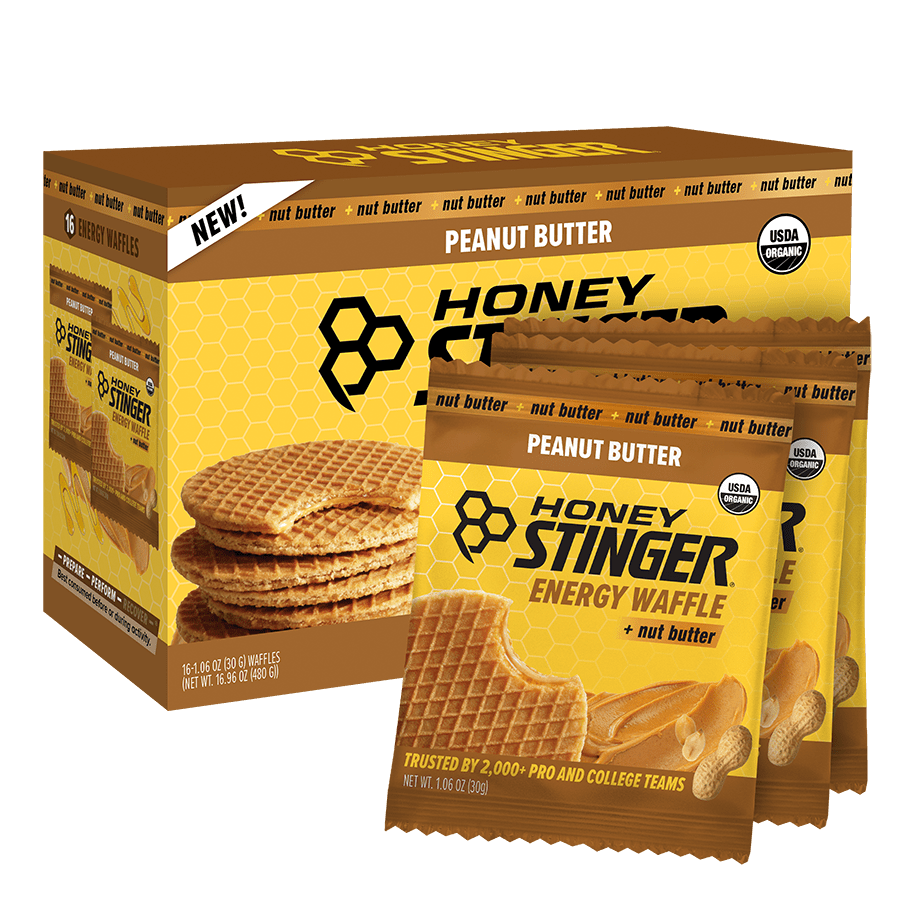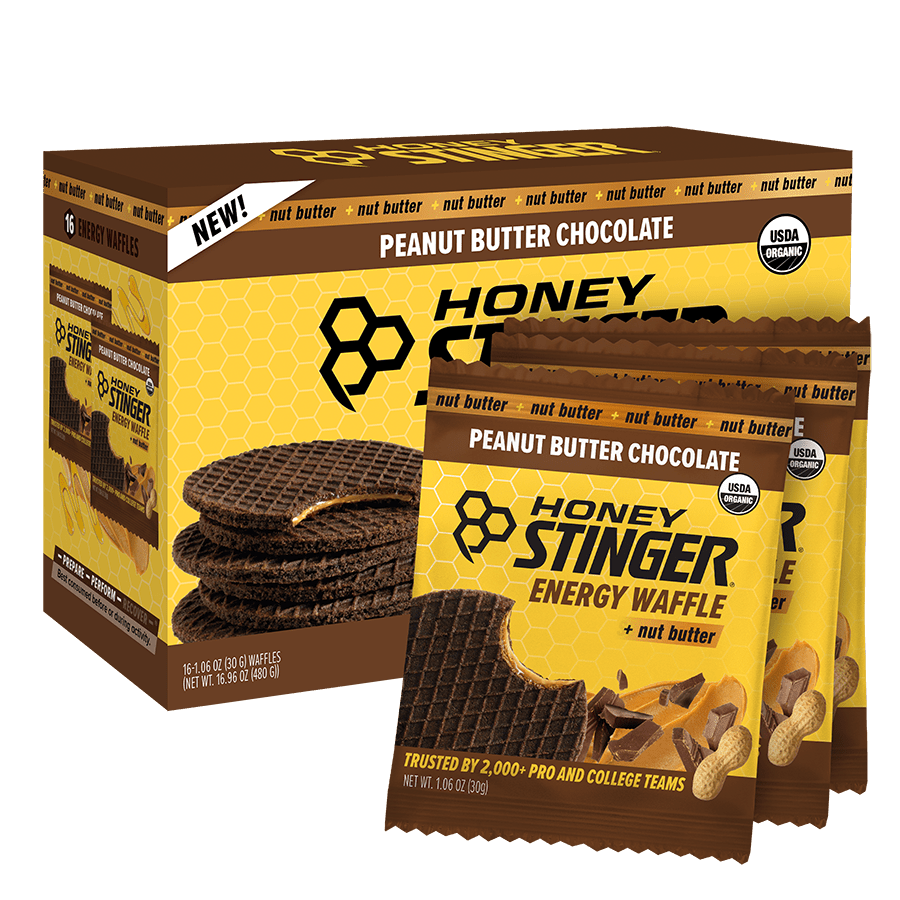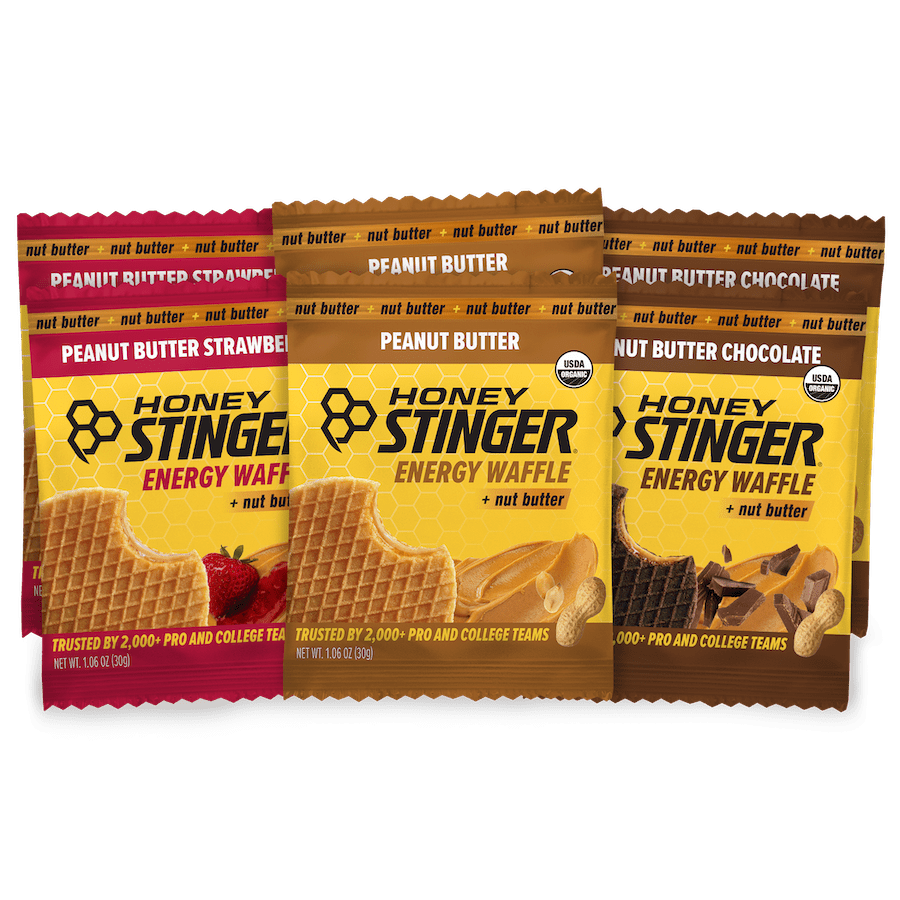Ric and Nell Rojas’s 7-Tier Interval Training Matrix©

It All Starts on the Track
If we had a nickel for every time we heard the phrase, “I hate the track and I’m not going there!” from a runner, we would be very wealthy. It could be argued, from a seasoned track coach, that this hatred of track interval workouts is simply a function of lack of understanding, unwillingness to learn, or fear of the unknown. Or, it could be that fearful runners have had one or more bad track workout experiences, thus drawing the conclusion that track workouts are nothing but pain and agony and not worth the possible performance upside.
The reality is that appropriate track workouts can make a significant difference in performance, and for world class athletes, an essential training component in producing world-class times. Such workouts are simply a given for virtually all world-class athletes. We argue that any runner can enjoy and greatly benefit from a more open approach to track workouts.
Our Approach to Training
As a runner and coach, we have either completed or supervised thousands of track workouts, and have developed interval workouts that are not only productive in terms of yielding progressively better times, but immensely satisfying and enjoyable for the runner. Creating and executing fun and productive track intervals can add to a coach’s skill set and certainly help runners improve their times and enhance their training experience. Here is a matrix of seven “Interval Tiers” that we have developed and which may be helpful in planning a single workout or a workout sequence over a season. We have reduced Interval Training to a few basic categories, but, in reality, there are an infinite number of combinations that can be created. We routinely use all of these Tiers, and constantly experiment with new combinations depending on our clients’ goals, training phase, and< preferences/responsiveness.
We always emphasize the importance of fueling correctly with the Marathon Training Pack that includes Honey Stinger Waffles and Rapid Hydration Mix for before the workout, Energy Gels or Chews and Rapid Hydration Mix for during, and after with Protein Bars and once again Rapid Hydration Mix!
Check out below for a fueling tip under each of the seven “interval tiers”!
A few basic operating principles apply to our interval system:
- The focus is always on completing the specific assignment per the planned workout.
- The emphasis is rarely to “max out” in any given workout. Rather, the objective is to build on recent workouts/races and gradually increase volume and intensity. We bias consistency and continuity over chronic high-intensity workouts. We leave maximum exertion efforts to either time trials or races.
- The workout objective is consistent with a specific performance goal and the workout always has specific performance numbers
- The workout should be progressively harder – the exertion level/velocity increases over the course of the session.
- The athlete may or may not have a great day, so workouts may be modified while in progress depending on the runner's current training capacity.

Ric and Nell’s Seven Interval Tiers
Reach out to either Ric (here) and/or Nell (here) today for a FREE coaching consultation! Tell them Honey Stinger sent you.
Level 1: Basic Even-Pace Intervals
Pre-Workout Nutrition: Eat a HS Waffle 30-60 min before you start and begin sipping on Rapid Hydration during your warm up.
- Description: Hold all variables constant: Number, Distance, Speed, Recovery, Perceived Exertion
- Number of reps: Pre-planned
- Interval Distance: Constant
- Rest Interval: Constant
- Speed/Perceived Exertion: Constant
- Application: This basic interval format is designed to program pace/train for "personal best" even-pace racing. Good for any level from beginner to experienced. Not ideal for athletes who may need varying speeds/accelerations for racing situations (surging & kicking). This format does not allow the runner to start more conservatively and gradually warm-up, as would be the case in "Level 3" below. So, the average should be more conservative.
- Example: 12x400m@ 80-seconcls w/ 90-second recovery
Level 2: Increase/Decrease Recovery Interval
During Workout Nutrition: We recommend taking a Honey Stinger Gel 5-10 minutes before you start your interval training, and sipping on a Rapid Hydration Mix throughout the workout. Shop their Perform line-up here.
- Description: Hold variables, except for recovery, constant
- Number of reps: Pre-planned
- Interval Distance: Constant
- Rest Interval: Gradually increases
- Speed/Perceived Exertion: Constant
- Application: Even-pace racing. Allows progressively more recovery in order to metabolize lactic acid/maintain eve-pace as the workout progresses.
- Example:5x1000m @ 5:45 w/progressively longer recovery: 2:30/3:00/3:15/3:35. The rest interval is increased in order to maintain even pace on the interval.
Level 3: Progressively Faster Intervals
Post Workout Nutrition: We recommend eating a protein bar (the Nut + Seed bars are DELICIOUS) as soon as you finish your cool down. It’s always a good idea to continue sipping on Rapid Hydration mix throughout the day following a hard workout.
- Description: Run each rep or set of reps increasingly faster
- Interval Distance: Constant
- Rest Interval: Hold constant or increase
- Speed/Perceived Exertion: Run each rep or set of reps increasingly faster
- Application: This format allows a gradual transition from warm-up to faster, more aggressive intervals toward the end of the workout. This workout is designed to focus on higher intensity within last two-thirds of the sequence.
- Example 1: 6x (2x200m): 90/88/84/82/80 w/ 90-sec. recovery
- Example 2: “Reverse Ladder”: 1600/1200/800/400 w/1600 @ 5K Race
- Pace/1200 @ 5K Pace minus 10-Seconds per Mile; 800 @ 5K Pace minus 20-seconds/Mile; 400 @ 5K Pace minus 30 seconds/Mile with a full recovery.
Level 4: Alternating Interval Distance Variations
Fueling for longer interval sessions: If you’re in core marathon training and your intervals are longer than normal, try using Mango Melon Performance Chews for caffeine and an extra boost of electrolytes.
- Description: Varying interval distances targeting multiple race distances.
- Interval Distance: Two or more distances such as 400/200
- Rest Interval: may vary depending on previous interval: Should allow sufficient time to hit target interval times
- Speed/Perceived Exertion: Race pace or slightly faster for specific race distances
- Application: Training for two or more distances in the same workout.
- Example: 8x (400/200):400s in 85 sec; 200, in 40-sec. w/ 90/75-sec recovery.
Level 5: Accelerations
Marathon Fueling Tips: Practice, practice, practice! The more you practice knowing what works for you, the better fueling will go and the more confident you will be! Practice taking gels at different frequencies throughout your intervals to see what works best for you!
- Description: Hold variables constant; embed accelerations within selected intervals
- Interval Distance: constant
- Rest Interval: May vary depending on intensity of interval
- Speed/Perceived Exertion: Accelerations simulate "surging" and "kicking" in a race.
- Application: Race situation simulation
- Example: 5 x 600m: 1. Even pace (slightly slower than race pace) /transition; 2. Surge middle 200m; 3. Race pace; 4. Kick last 200m; 5.
- Even pace/faster than race pace Repeat 4. This format includes
- "In/Out" workouts (alternating "fast and fast-partial recovery"). Steve
- Prefontaine's "30/40" 200-meter workout is an example of this format.
Level 6: Race Simulation
Fueling Tip for During a Race: Carry extra Gels on you just in case you lose one along the way or feel a bonk coming on!
- Description: This format incorporates practice starts & finishes and optional surges at various points on the track and in the course of the workout. This should be a fun interactive workout before a race and after heavy workouts are done.
- Interval Distance: Usually shorter to allow more reps.
- Rest Interval: Nearer to full recovery
- Speed/Perceived Exertion: Fast but Short/ lower
- Application: Usually a "pre-race" workout designed to prepare for rare-specific competitive situations. Not necessary to run high exertion levels.
- Example: 4 x (2x150m): set 1: Race pace; Set 2: Alternate practice start Finish; Set 3: Race pace; Set 4: Repeat set 2.
Level 7: Bookends
- Description: This is a hybrid workout combining tempo running and speed work. The workout starts and ends with short "Tempo" runs (usually 600m to 1600m) to add volume to a basic speed session.
- Interval Distance: Tempos are usually 600m to 1600m and the intervals are short, usually 10-12 x 150's or 200's, run progressively faster.
- Rest Interval: Just enough to hit target interval times
- Speed/Perceived Exertion: Tempo's only moderate; intervals are race pace or faster.
- Application: Speed development. Later season session work for racing shorter distances while retaining workout volume.
- Example: 600m/ 3 x (4x200m)/600m: Tempo effort (10K Pace) /Start with 5000m pace and run progressively faster /Tempo effort.
Nell’s Favorite Honey Stinger Products
- Black Cherry Rapid Hydration
- Cookies & Cream Waffle
- Cherry Blossom Energy Chews
- Acai Pomegranate Energy Gel
- Almond Pumpkin Nut + Seed Bar
Additional Notes
- These are coach-athlete interactive workouts. They require good communication and attentive coaching.
- The coach should be adept at reading body language/listening to verbal queue's, monitoring exertion levels, and making adjustments to optimize the workout.
- Work out details need to be documented before the workout.
- Modifications can be made according to the athlete's performance. For example, the workout may be terminated prematurely or extended; the intensity/speed may be changed; or the sequence may be modified.
- The changes can be made based on what kind of day the athlete is feeling/how he is managing the workout, weather conditions, or if objectives are met prior to completing the workout.
About Ric + Nell
Ric Rojas graduated from Los Alamos High School in 1970, received his BA from Harvard University in 1974, and his MBA from the University of Denver in 1982.
In high school, Ric won four New Mexico State High School Championships, two in Cross Country and two in the Mile, and was ranked in the top 10 United States High School Milers by Track and Field News.
Ric still holds the New Mexico 5A State Mile/1600m record* of 4:12.6=4:10.85 1600m, which he set at UNM Stadium in Albuquerque (5,000ft.), New Mexico (1970). His best high school mile time was 4:11.6 (=4:09.85 1600m), run at the USATF National Indoor Championships at the Houston Astrodome in February 1970.
Beyond High School, Ric had successful College and Professional careers. While at Harvard, he set the Three-Mile school record with a time of 13:30 at the 1974 Penn Relays, won numerous Greater Boston Track and Cross Country Championships, and qualified for “All-Ivy” honors in Track and Cross Country. His 1974 3-Mile mark at the Penn Relays remains among the top ten fastest 3-mile/5000 marks ever run at Harvard.
As a Professional, he and Boston Marathon Winner Bill Rogers were the only two runners ranked in the top 10 US Road Racers by Track and Field News during the four years the rankings were published from 1977-1981.
Ric set the 15K World Record at the 1981 Gasparilla Distance Classic (43:12) and won numerous major road races, including the 1975 San Francisco Bay-to-Breakers, 1978 Utica Boilermaker, 1979 Bolder-Boulder, the 1979 Lilac Bloomsday Run, the 1978 Tucson Sun Run, the 1978 Garden of the Gods 10-Mile, the 1979 Springbank International Road Race, the 1980 Salt Lake City Deseret 10K Run, and the 1978 Schlitz Light National Championship. He also won the US AAU National Cross Country Championship at Belmont Park in Philadelphia in 1976.* As a master’s runner, he has won three USATF Age-Group National 5000-meter Track Championships.
Coaching
Ric unofficially coached his Los Alamos High School Cross Country and Middle Distance Track teams while a senior at Los Alamos. Although there was not a great deal of training information at the time, Ric patched together an effective training system which became the foundation of his present-day Peak Performance Training System. His protégé’s in Los Alamos include Anthony Sandoval, Lynn and Mark Bjorklund, and Jim McMillan.
While living in Boulder, Ric has coached hundreds of masters, open, and junior runners including National Junior Champion Sarah Cocco, Olympic Trials top 10 place finisher and 10 mile National Champion, Nell Rojas, and Age-Group Mile World Record (pending), Laurie Rugenstein. He has developed a 10-Point Peak Performance Training System that works for runners of any ability, age, or gender.
Nell

Nell Rojas is a professional marathon runner and the founder of RISE Boulder. She grew up in Boulder, CO immersed in the running community. She walked on to the Northern Arizona Cross Country and Track and Field team. After college she became a professional triathlete before dabbling in obstacle course racing, and finally finding her stride in the marathon. She discovered marathons when she finished 7th at the 2018 marathon national championships in a time of 2:31. She recently finished 6th at the 2021 Boston Marathon and 10th at the 2022 Boston Marathon. She is the 2021 10 mile national champion.
Nell started coaching with her dad Ric Rojas when she graduated from high school and has been coaching ever since. She is well known for her strength training for runners.
PR's: Marathon 2:25:57 / 10k: 31:52 / 5k: 15:37










